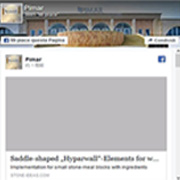How Do BNC Connectors Work with Video Surveillance?

For CCTV and surveillance systems, you can use at least dozens of components to build your system. Some components are small and seem inconsequential, while others are so large that they seem to make up the entire system (think cameras and DVRs); however, no matter the size of the components, each component serves a great purpose. Connectors may look small, but they are powerful.
The BNC connector (or Bayonet Neill-Concelman) is a common RF connector that uses a BNC cable. Typically, these types of connectors are used in avionics, test equipment, ham radio antennas, and military equipment, but more recently, they have been used in surveillance systems.
Consumers can use BNC connectors instead of RCA connectors for composite video. If the RCA jacks don't have a suitable BNC connector, all the user has to do is install an adapter.
BNC connections are often found in recording studios because these types of connectors make it easy to synchronize various components. Additionally, they have become a popular choice for video surveillance, especially where analog cameras are present.
If the consumer wants to build and update his or her legacy system, the BNC connector makes this possible. BNC connectors connect analog video components from a camera to a TV monitor or DVR. It snaps securely into place, providing a high-quality and secure connection.
Types of BNC connectors
There are four main types of BNC connectors:
Twist-on
F-compression connector
F type crimp connector
Crimp-on
Twist-on BNC
This type of connector is simple to use and doesn't require any tools as you just screw the connector onto the coax cable, as the name suggests. Of course, tools may be required if the cable has not been stripped beforehand. Some people consider twist-on BNCs to be unreliable because their connections are not as secure as a crimp or compression connectors, but as long as the cable is properly prepared, they can get the job done.
F-compression connector
BNC compression connectors can be installed in one of two ways:
1) Use the one piece BNC compression connector and you're good to go.
2) Connect the compression F connector to the coaxial cable and screw on the BNC connector.
Many installers prefer the second method because there is no need to guess the length of the coax core. In the second approach, the core is visible and there is little room for error. Also, many installers prefer method two because F connectors can be used in most TV installations as well as surveillance system installations. Not only does this mean that they can eliminate at least one material in an average run, but it also means that they do well on the job because they do it all the time.
F type crimp connector
The F-crimp connector method is similar to one of the F-compression connectors, except that a crimp connector is used instead of a compression connector. As with the method above (number 2), connect the F connector to the cable first, and then connect a screw-on BNC connector.
Crimp-on connector
Crimp BNC connectors are also available in two styles: 2-piece and 3-piece. 3-piece is rarely used, so for this article, we will only discuss the 2-piece method. Installing cables with 2-piece BNC crimp connectors requires two tools: a crimp tool and a cable stripper. Although this process takes slightly longer than any other process, the end result is a secure connection and the cable won't lose any time after it's installed.
The above briefly introduces how to use BNC connectors with video surveillance. If you want to buy BNC connectors, please contact us.
Haoze is a professional custom antenna accessories manufacturer. We specialize in producing antenna connectors, CATV amplifiers, CATV splitters, satellite splitters, CATV wall sockets (terminal boxes) and other high-quality CATV system accessories, etc. We have our own engineers, so we can design and produce products according to customers' requirements. All products are produced by automatic machines and thoroughly tested to ensure the quality of our products.


